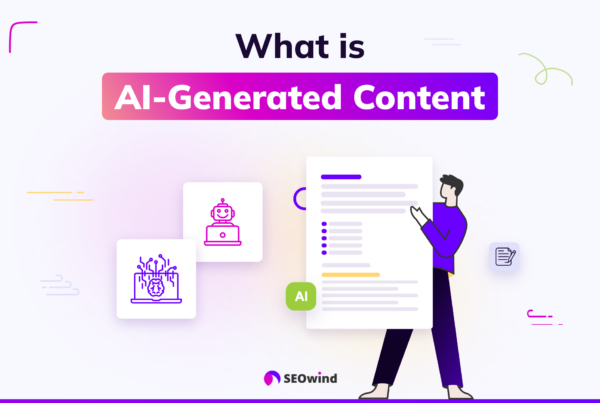Maintaining a strong online presence is crucial for success. However, it’s not just about pumping out new content regularly. It’s also about keeping your existing content fresh and relevant. This is where a strategic “content refresh” comes into play. By updating and optimizing your old content, you can breathe new life into it, attract more traffic, and ultimately boost your website’s performance.
In this comprehensive guide, we will explore the ins and outs of content refreshment, from understanding content decay to employing effective techniques for revamping your articles. So, buckle up and get ready to discover how you can transform your stale content into a powerful organic traffic magnet!
Key Takeaways on Content Refresh
- Content refresh is the process of updating and optimizing your existing content to improve its relevance, quality, and overall performance.
- Content refreshment involves three main aspects: Information Update, SEO Optimization, and User Experience Enhancement.
- Content decay refers to the gradual decline in the performance of your content over time caused by outdated information, increased competition, algorithm updates, and changing user intent.
- Regularly refreshing your content helps you maintain a robust online presence, stay competitive, and bring other benefits.
- Updating your content leads to higher search rankings, increased visibility, and, ultimately, more organic traffic.
- Search engines favor fresh and relevant content, contributing to better SERP rankings and improved on-page SEO elements.
- Updating headlines, meta descriptions, and call-to-actions can help boost click-through rates and drive more traffic to your website.
- Refreshing content is cheaper and takes less time than creating new content from scratch.
- Regularly updating your content demonstrates that you care about providing accurate information to readers, building trust with your audience, and positioning yourself as an authoritative source in your industry.
What is Content Refresh?
A content refresh is a process of updating and optimizing your existing content to improve its relevance, quality, and overall performance. It involves various tasks, such as enhancing the accuracy of the information, incorporating relevant keywords, addressing search intent, and refining the overall structure to make it more user-friendly. The primary goal of a content refresh is to revitalize older content, ensuring it remains valuable and continues to attract traffic and engagement.
Content refreshment can be divided into three main aspects:
- Information Update: This involves updating outdated information, statistics, and facts in your content to ensure accuracy and reliability. It may also include adding new insights, trends, or research findings that have emerged since the content was first published.
- SEO Optimization: This process focuses on improving your content’s search engine visibility by optimizing meta tags, and title tags, and incorporating target keywords. Updating internal and external links also plays a crucial role in enhancing your content performance.
- User Experience Enhancement: The final aspect of content refreshment revolves around improving the overall user experience of your content. This may involve restructuring the layout, adding multimedia elements (such as images or videos), and enhancing readability through better formatting.
By conducting regular content refreshes, you not only maintain your website’s relevancy. You maximize the return on investment (ROI) of the time and effort you’ve put into content marketing in the first place.
What Is Content Decay?

Content decay refers to the gradual decline in the performance of your content over time. This can manifest in various ways, such as a drop in organic search traffic, lower engagement levels, and reduced social shares. There are several factors that contribute to content decay, including:
- Outdated Information: As new information, trends, and research emerge, the relevance and accuracy of your older content may diminish. Users are less likely to engage with or share content that they perceive as outdated or inaccurate.
- Increased Competition: The digital landscape is constantly evolving, with new content being published every day. As more competitors enter your niche and publish high-quality content targeting the same keywords, your older content may lose its competitive edge and visibility in search engine results pages (SERPs).
- Algorithm Updates: Search engines like Google frequently update their algorithms to improve search results’ relevance and quality. These updates may affect how your content ranks in SERPs, potentially making you lose traffic over time.
- Changing User Intent: The way people search for information and the type of content they expect to find can change over time. If your content doesn’t align with the current searcher’s intent or fails to meet their expectations, it may experience a drop in performance.
Content decay is a natural part of the content lifecycle, but it’s not an inevitable death sentence for your older articles. By identifying and addressing issues that contribute to content decay through regular content refreshes, content marketers can revive your underperforming pieces and maintain a strong online presence.
Why Refreshing Content should be a part of your Content Strategy?
Regularly refreshing your content helps you maintain a robust online presence and brings numerous other benefits. Let’s delve into the key reasons why content refresh is crucial:
Increased competition pushes for better content
The digital world is teeming with new websites and content being published daily, making the competition for visibility on search engine results pages (SERPs) fierce. By refreshing your content, you ensure it remains relevant, up-to-date, and engaging, giving you a competitive edge in your niche. Moreover, updating your content with the latest information and trends helps maintain or improve your search rankings, making it easier for users to find your articles amidst the sea of competitors.
Search engines like fresh content
Search engines like Google place a high value on fresh, up-to-date content. Regularly refreshing your articles and blog posts signals to search engines that your website is actively maintained and provides valuable information to users. This can lead to higher search rankings, increased visibility, and ultimately more organic traffic.
Fresh content improves your rankings
As mentioned earlier, fresh and relevant content is favored by search engines. Updating and optimizing your existing content allows you to target relevant keywords more effectively and improve on-page SEO elements (such as meta tags and internal links), contributing to better SERP rankings.
Query Deserves Freshness
Google’s “Query Deserves Freshness” (QDF) factor highlights the relevance of recent information in certain search queries. For instance, news articles or trending topics may benefit from frequent updates. By having fresh content, you can capitalize on the QDF factor and boost the visibility of time-sensitive material.
Improve your click-through rates
Updating headlines, meta descriptions, and call-to-actions can help boost click-through rates (CTR), driving more traffic to your website. An engaging headline or an enticing meta description can make a significant difference in attracting users to click on your content.
It’s cheaper and takes less time than creating new content
Doing content refreshes typically requires less time and resources than creating new content from scratch while still delivering substantial results. By focusing on improving underperforming pieces, you maximize the return on investment (ROI) of the time and effort you’ve already put into creating that content.
It helps build trust
Regularly updating your content demonstrates that you care about providing accurate information to readers. This helps establish trust with your audience and positions you as an authoritative source in your industry. In turn, this credibility can lead to increased user engagement and social shares.
How to do content refresh with SEOwind
SEOwind is more than a handy AI writing tool. It’s your sidekick for content updating. This is how our customers are using it.
How to Identify an Article, Blog Post, or Page to Refresh
Before diving into the content refresh process, it’s essential to identify which pieces of content will benefit the most from an update. Here are three approaches to help you pinpoint the content that needs a refresh:

Quick Wins Audit – Striking distance keywords
A quick wins audit focuses on identifying content that is currently ranking on the second or third page of search engine results. These pages have the potential to drive significant traffic with some optimization and updating. To conduct a quick wins audit:
- Use tools like Google Analytics or your preferred SEO audit software to analyze your organic search traffic data.
- Identify pages that rank between positions 11-30 for target keywords.
- Prioritize these pages based on their potential impact on traffic, conversions, or other key performance indicators.
By concentrating on these “quick win” opportunities, you can maximize the return on your content refresh efforts in a relatively short time.
Content Decay Audit
A content decay audit involves identifying old blog posts, articles, and landing pages that have experienced a decline in performance over time, such as reduced organic traffic or lower engagement levels. To perform a content decay audit:
- Examine your website’s historical traffic data using tools like Google Analytics.
- Identify pages that have experienced a significant drop in traffic or engagement over a specific period (e.g., 6 months, 1 year).
- Assess these pages for factors contributing to content decay, such as outdated information, increased competition, or alignment with user intent.
By targeting content experiencing decay, you can revive underperforming pieces and prevent further deterioration of your website’s performance.
Evergreen Content Refreshes
Focusing on evergreen content – articles that remain relevant and valuable over time – can help ensure your website’s long-term success. Refreshing evergreen content keeps it up-to-date and accurate while maintaining its existing SEO value. To identify evergreen content for refreshes:
- Review your website’s content inventory to find articles with topics that have a long shelf-life and continue to be relevant over time.
- Analyze the performance of these evergreen pieces and prioritize those with high traffic or engagement levels.
- Consider refreshing these articles periodically (e.g., annually) to maintain their value and relevance.
By taking a strategic approach to identifying which website content requires refreshing, you can maximize the impact of your efforts and ensure your website remains competitive and engaging for users.
How to Update Old Content for SEO & Content Marketing

Updating your old content for search engine optimization (SEO) is crucial to improve its visibility, drive more organic traffic, and maintain its relevance. Here’s a step-by-step guide on how to update old content for SEO:
Step 1: Match Search Intent
Understanding and aligning with the search intent of users is critical for creating content that meets their needs and expectations. To ensure your updated content matches keyword intent:
- Identify the primary keywords your content is targeting and analyze how users are searching for that topic.
- Review the top-ranking pages in search engine results pages (SERPs) to understand what type of content resonates with users.
- Adjust your content format, structure, and information accordingly to better match user intent.
Step 2: Cover the Topic More Thoroughly
Comprehensive coverage of a topic not only enhances user experience but also signals to search engines that your content is valuable and authoritative. To cover your topic more thoroughly:
- Research the subject matter, including new information, trends, or research findings that have emerged since the content was first published.
- Expand on key points or subtopics as needed to provide a more in-depth analysis or explanation.
- Add relevant examples, case studies, or multimedia elements (such as images or videos) to support your points and keep users engaged.
Step 3: Stand Out from the Crowd
Differentiating your content from competitors can help it stand out in SERPs and attract more traffic. To make your content unique:
- Identify competitor content targeting similar keywords and analyze their approach.
- Determine what sets your content apart and emphasize those differences (e.g., unique insights, exclusive data).
- Consider incorporating additional value-add elements such as infographics, charts, or expert quotes to make your content more captivating.
Step 4: Update Anything Outdated
Ensuring the accuracy of the information in your content is essential for building trust with users and maintaining credibility. To update outdated material:
- Review all facts, statistics, and data in your content for accuracy and relevance.
- Replace outdated information with current data, research findings, or industry trends.
- Update any broken links or add new internal and external links as needed for improved navigation and SEO performance.
Step 5: Publish and Promote
Once you’ve refreshed your outdated content, it’s time to republish and promote it:
- Update the publication date if appropriate, to reflect the recent changes and signal freshness to search engines.
- Share your updated content on social media platforms and relevant online communities to drive additional traffic.
- Consider reaching out to industry influencers, partners, or other stakeholders who may be interested in sharing or linking to your refreshed content.
By following these steps, you can effectively update your old content for SEO, enhance its visibility, and ensure it remains relevant and valuable for users in the long run.
Hacks for updating content
Are you tired of updating your content with no results? Look no further.
In this video, we share 3 effective tactics to make your updates stand out and drive engagement. Plus, a bonus hack that will inspire you to up your content game.
Content Refresh Tactics – where to start
Below you will find content refreshing tactics, starting from the simplest ones and getting to more advanced ones.
Tactic 1: Change Title Tags & Meta Descriptions
Title tags and meta descriptions play a significant role in influencing click-through rates and search engine rankings. Updating these elements can have an immediate impact on your content’s performance.
- Title Tags: Craft a compelling, keyword-rich title that accurately reflects the content’s topic and entices users to click.
- Meta Descriptions: Write a concise, engaging description that summarizes the content and includes relevant keywords to improve visibility.
Tactic 2: Update Content of Old Page
Review the existing content for outdated information, inaccuracies, or gaps in coverage. Update the content with the latest data, research findings, or industry trends to ensure its relevance and accuracy.
- Address any outdated or incorrect facts, statistics, or examples.
- Add new insights or perspectives when applicable.
- Enhance readability through better formatting, such as headings, bullet points, and shorter paragraphs.
Tactic 3: Target New Keywords
Identify new or trending keywords related to your content topic and incorporate them into your updated article. This can help improve search rankings and attract more organic traffic.
- Conduct keyword research using tools like SEOwind, Google Keyword Planner, or SEMrush.
- Incorporate relevant long-tail keywords and phrases that reflect user intent.
- Ensure keyword usage sounds natural and doesn’t result in over-optimization.
Want to learn more about conducting keyword research? Go to our Step-by-Step Guide on How to do SEO Keyword Research.
Tactic 4: Merge Old Content
Combining related pieces of old content can create a more comprehensive resource that provides greater value to users and improve SEO performance.
- Identify similar or complementary articles on your website that can be merged.
- Consolidate the content into a single piece, ensuring a logical flow of information and eliminating duplicate material.
- Redirect any old URLs to the new consolidated page to maintain link equity.
Tactic 5: Redesign Old Content
Enhancing the visual appeal and user experience of your content can significantly impact its performance.
- Improve the layout and design of your content to make it more visually appealing and easier to navigate.
- Incorporate multimedia elements such as images, videos, or infographics to enrich the user experience.
- Optimize page load speed and mobile responsiveness for better usability across devices.
By implementing these five levels of the content refreshing process, you can transform your old content into high-performing assets that drive increased traffic, engagement, and conversions.

Tools to Help with Content Refreshing
Various tools can assist you in the content refresh process, from identifying underperforming pages and supporting keyword research to optimizing your content for SEO.
Here are some popular tools that can help you streamline your content refresh efforts:
- Google Analytics: This powerful tool allows you to analyze your website’s traffic data, identify content decay, and track the performance of updated content. Use it to find pages that require a refresh and monitor the impact of your efforts.
- Google Search Console: By monitoring your website’s search performance, Google Search Console helps you pinpoint underperforming pages and uncover potential SEO issues. Additionally, it provides valuable insights into keyword rankings and click-through rates.
- Ahrefs: This comprehensive SEO tool offers features like site audits, keyword research, and competitor analysis. Use it to identify content decay, discover new keywords, and monitor the backlink profiles of your refreshed pages.
- SEMrush: Another all-in-one SEO toolkit, SEMrush lets you conduct keyword research, track rankings, and analyze backlinks. It also includes a content audit feature that helps you find outdated or underperforming content in need of a refresh.
- Yoast SEO plugin: If you’re using WordPress, the Yoast SEO plugin can be an invaluable asset for optimizing your content for search engines. It analyzes your on-page SEO elements (such as title tags and meta descriptions) and provides real-time suggestions for improvement.
- Hemingway Editor: This editing tool helps you improve the readability of your content by highlighting complex sentences, passive voice usage, and other potential issues. Use it to make your refreshed content more accessible and engaging for users.
By leveraging these tools in your content refresh process, you can save time, optimize your efforts, and maximize the impact of your updated content on search rankings and user engagement.
Develop a Content Refresh Habit
To maintain a strong online presence and keep your content performing at its best, developing a content refresh habit is essential. This means consistently reviewing, updating, and optimizing your existing content as part of your overall content strategy. Here are some tips to help you establish a regular content refresh routine:
1. Schedule periodic audits: Set up a schedule for conducting content audits, such as quarterly or biannually. Regularly reviewing your website’s performance data will help you identify underperforming content in need of a refresh and track the impact of your efforts.
2. Prioritize high-impact content: Focus on refreshing the content that has the most significant potential impact on your website’s performance. This may include articles already driving substantial traffic or conversions, pieces ranking on the second or third page of SERPs, or those experiencing content decay.
3. Stay informed about industry trends: Keep up-to-date with the latest developments in your industry to ensure your content remains relevant and valuable to users. Incorporate new insights, research findings, or emerging trends into your refreshed article or blog post.
4. Monitor SEO best practices: Stay current with SEO best practices and algorithm updates from search engines like Google. Adapting your content refresh strategy in response to these changes can help you maintain or improve your search rankings.
5. Iterate and refine: As you implement your content refreshes, monitor their impact on key performance metrics such as organic traffic, engagement levels, and conversions. Use this data to refine your approach and identify which tactics are most effective for boosting performance.
6. Document your process: Create a standardized process or checklist for refreshing content that outlines the key steps involved, such as updating outdated information, optimizing on-page SEO elements, and improving user experience. This can help streamline your efforts and ensure consistency across all refreshed articles.
By incorporating content refreshment into your regular routine, you can stay ahead of the competition, maintain a fresh and engaging website, and maximize the value of your existing content for long-term success.
Conclusion
Content refreshment is a vital aspect of maintaining a strong online presence and ensuring your website continues to provide value to users. By regularly updating and optimizing your existing content, you can keep it relevant, improve search engine rankings, and drive more website traffic. Developing a content refresh habit not only extends the lifespan of your articles but also maximizes the return on investment for your content creation efforts.
Remember to prioritize high-impact content, stay informed about industry trends and SEO best practices, and refine your approach based on performance data. With a consistent content refresh strategy in place, you can transform your website into an evergreen resource that consistently engages users and helps you achieve your content marketing goals.


